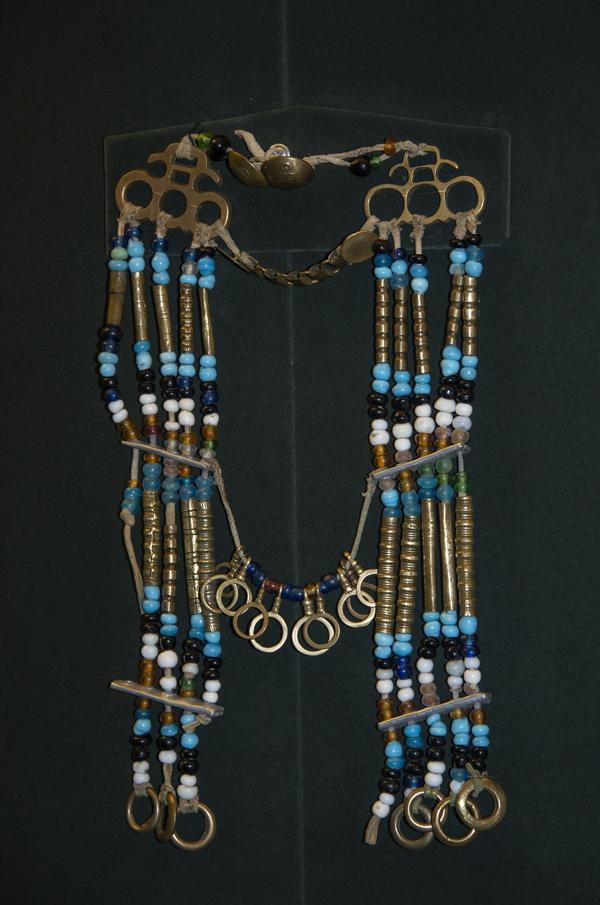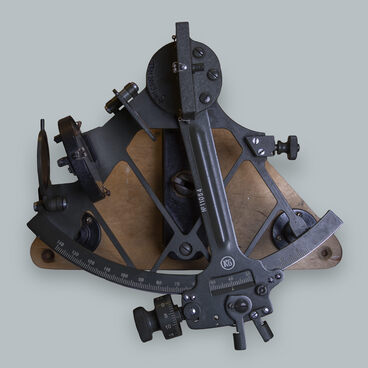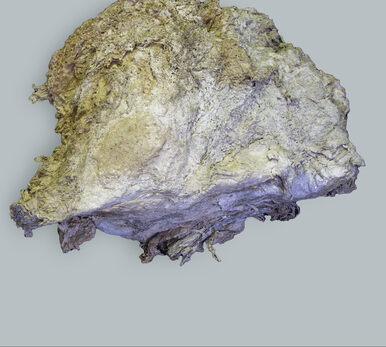One of the most common items of clothing around the world is the belt. Dolgan men and women usually wore three types of belts: deerskin suede, woolen, or leather ones. Cloth belts were decorated with beads, and leather belts — with plates of metal and silver alloys. The belts often had rings soldered on the sides to fasten various objects. A usual men’s set included a hunting knife, flintlock, purses made of deerskin suede or cloth with beaded embroidery. Women carried at the waist a toiletry kit, a needle case, a purse, and a smoking pipe. Women from wealthy families could afford silver jewelry. In addition to its aesthetic and utilitarian value, the ornaments had a sacral significance, serving as amulets against evil spirits.
To the east, the Taimyr Municipality borders the Republic of Sakha (Yakutia), which has historically led to the establishment of close cultural links between the Dolgans and the Yakuts. Ethnic connections between these peoples are also visible in traditional Dolgan ornaments. Dolgans were engaged in metal processing and making inlays from copper, tin, or silver on wood and iron for the tips of staffs, forepieces of deer saddles, stems of knives, iron pipes, or cheek plates of a snaffle-bit. And Yakut craftsmen reached the big heights in jewelry art. Dolgans often fastened ornaments from beads to their belts, one of which is displayed in this exhibition. Beads, tubes, buttons, and rings were strung on deerskin straps and fixed with knots.
Colored glass beads — odekuy — came to the Far North and Siberia in the 18th–19th centuries and became the object of barter trade: Russian and foreign merchants exchanged them for furs. Beads differed in shape and shades of color; the northerners valued them highly.
From the late 16th to the early 18th century, odekuy beads came from China and Central Asia. Over time, Russian merchants, having gained a firm foothold in the Western Siberian market, began to mediate by importing this jewelry. Before the advent of beads, the locals used to decorate clothing and household items with beads. They were made of mammoth ivory in the form of beads, discs, and poles, and dyed with natural dyes.
To the east, the Taimyr Municipality borders the Republic of Sakha (Yakutia), which has historically led to the establishment of close cultural links between the Dolgans and the Yakuts. Ethnic connections between these peoples are also visible in traditional Dolgan ornaments. Dolgans were engaged in metal processing and making inlays from copper, tin, or silver on wood and iron for the tips of staffs, forepieces of deer saddles, stems of knives, iron pipes, or cheek plates of a snaffle-bit. And Yakut craftsmen reached the big heights in jewelry art. Dolgans often fastened ornaments from beads to their belts, one of which is displayed in this exhibition. Beads, tubes, buttons, and rings were strung on deerskin straps and fixed with knots.
Colored glass beads — odekuy — came to the Far North and Siberia in the 18th–19th centuries and became the object of barter trade: Russian and foreign merchants exchanged them for furs. Beads differed in shape and shades of color; the northerners valued them highly.
From the late 16th to the early 18th century, odekuy beads came from China and Central Asia. Over time, Russian merchants, having gained a firm foothold in the Western Siberian market, began to mediate by importing this jewelry. Before the advent of beads, the locals used to decorate clothing and household items with beads. They were made of mammoth ivory in the form of beads, discs, and poles, and dyed with natural dyes.



